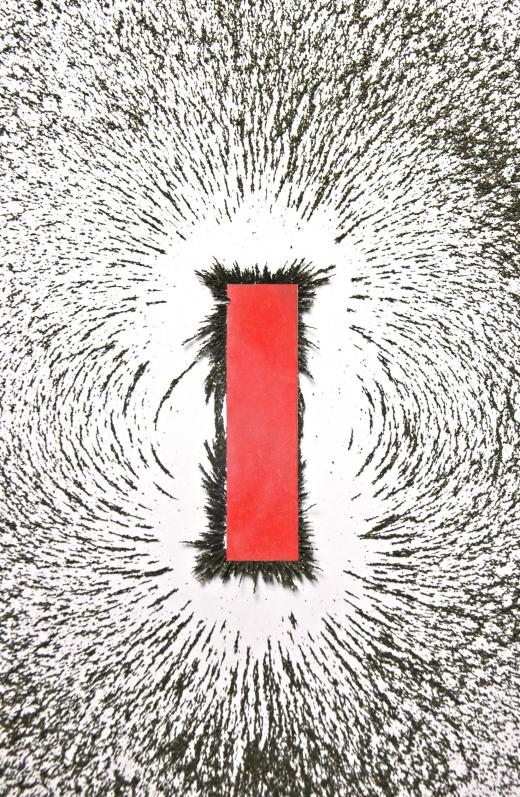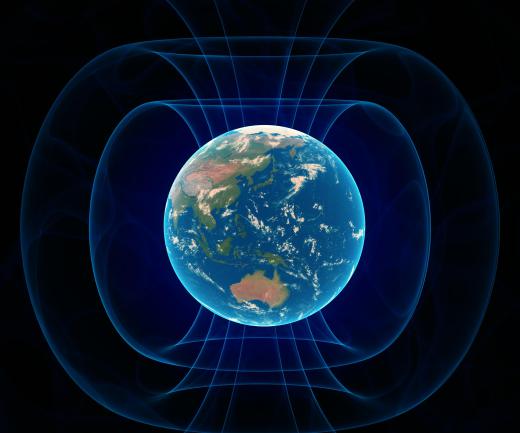What Is Magnetic Flux Density?
The measure of the strength of a magnetic field is called magnetic flux density, or magnetic induction. A magnet is said to have a north and a south pole; two magnets will repel each other when like poles face each other and attract each other when opposite poles come close to each other. Electrically charged particles are also deflected in magnetic fields.
Magnetic flux density is analogous with features of electric and gravitational fields. Electrical field strength is the force acting on a body per unit charge, and gravitational field strength is the force acting on a body per unit mass. Magnetic fields are created by a electric current. Magnetic flux density (B) is force (F) acting on a conducting material per unit length (l) and per unit of current (I), which can be written as the equation B = F / I x l. The unit of magnetic flux density is called the Tesla.

A magnetic field is always generated at 90 degrees to a moving electric field. The direction of the electric current, magnetic field and magnetic force are defined by John Ambrose Fleming's left-hand rule. Holding the left hand's first two fingers and thumb at right angles to each other will indicate the relative directions the thrust, field and current. As suggested by the similarity of the words' first sounds, the thumb shows the relative direction of the thrust, and the the first finger shows the relative direction of the field. The second finger shows the relative direction of the current.

It is possible to see a magnetic field using just a bar magnet, a sheet of white paper and some iron filings. This is done by placing the magnet underneath the paper and lightly sprinkling the paper with the filings. The fillings will align themselves with the magnetic field's curved lines of flux. More filings will be attracted to either end of the magnet than in the middle, meaning that the magnetic flux is strongest at these points. This also is the case with the Earth's magnetic field.

The Earth's magnetic field is caused by the present of a molten, rotating iron core at its center. Its flux density is strongest at the North and South poles. Electrically charged particles from the sun are attracted to the poles, which causes the aurora borealis, or northern lights, and the aurora australis, or southern lights.
Weaker magnets will align themselves with the flux lines of stronger magnets. It is this phenomenon that is exploited by a compass, the needle of which is a very weak magnet. By convention, the compass' south pole points to the North Pole of the Earth, but if the compass was magnetized in the opposite direction, it would point to the South Pole.
AS FEATURED ON:
AS FEATURED ON:













Discuss this Article
Post your comments